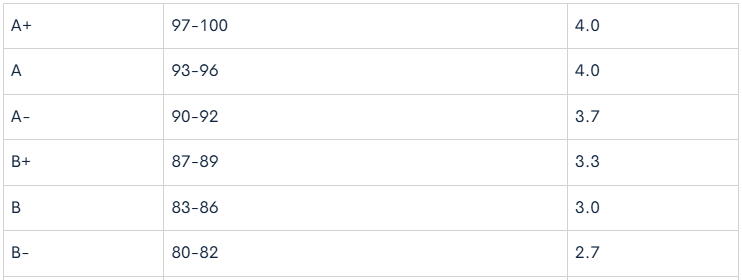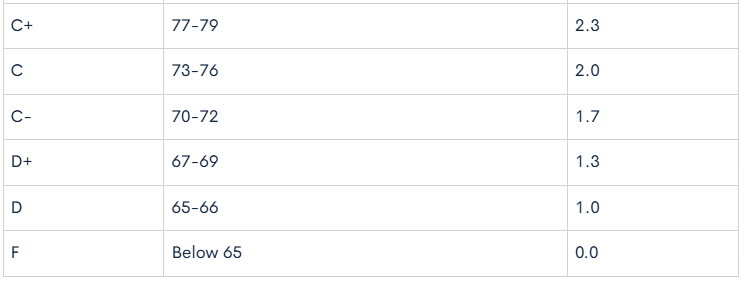
Academic Eligibility
A high school student action plan includes the understanding of the college admissions standards, specifically the Grade Point Average (GPA) which is the needle by which colleges measure eligibility.
Overall, colleges accept a B average as a minimum GPA , but some higher selective colleges evaluate applicants with B+, A–, and A averages. Still, other schools may have other weight factors that that many apply.
The GPA: Maintaining a High Standard is to Your Advantage!
The 4.0 system is the standard at most colleges, and many high schools. A letter grade is translated into a scaled score and this score is multiplied by the amount of credits the course is worth. That is used to determine a cumulative (total) GPA.
Other variables are taken into account when considering college admission requirements. For example:
• some schools don’t give plus and minus letter grades
• Some schools include non-academic courses, such as physical education, in the calculation
• advanced courses can give students extra credit for taking challenging classes. •some independent schools use a letter grading system, but don’t convert grades to a 4.0 system or supply a cumulative GPA. Other schools maintain a percentile-based grading system whereby students receive grades on a 0-100 point scale.
• some college admission officers may those factors to un-weight and then re-weight your GPA as per their prerogative.


Translating your GPA scale
Want to compare your grades to a 4.0 scale to determine college admissions? Use this chart.


The Latest FAFSA News
About Us
Black College Sports & Education Foundation- the gateway to unlimited access to educational opportunities.
We offer a free Comprehensive Preparation Assistance Program .
Our Mission
· Provide a seamless transition for prospective students and athletes who who need assistance in furhtering their education.
· Support the preservation of HBCUs through promotion and recruitment.
Copyright 2016 © All rights Reserved. Black College Sports & Education Foundation, Inc.
The Black College Sports & Education Foundation, Inc. A 501 (c)(3) nonprofit organization. All donations are tax-exempt.